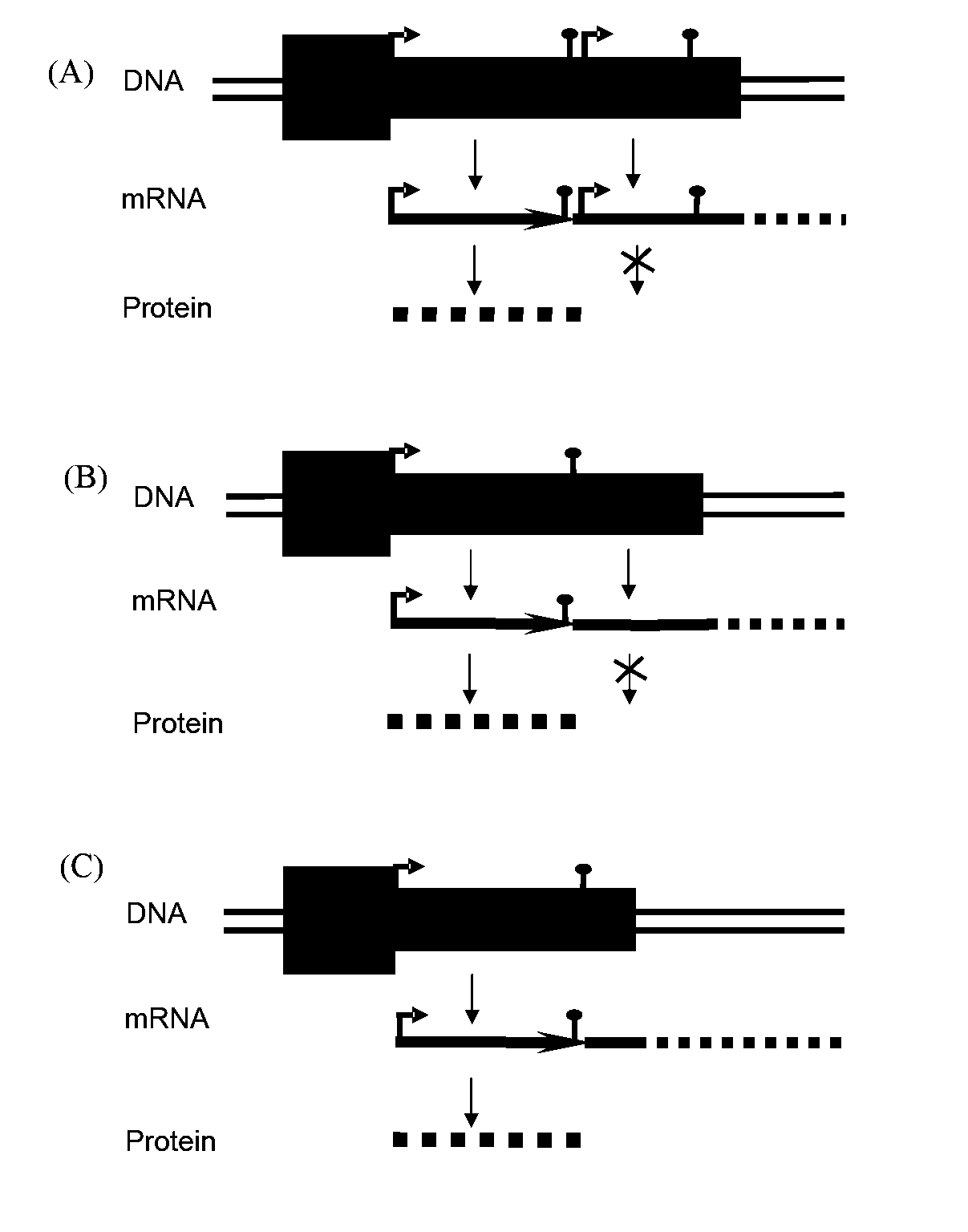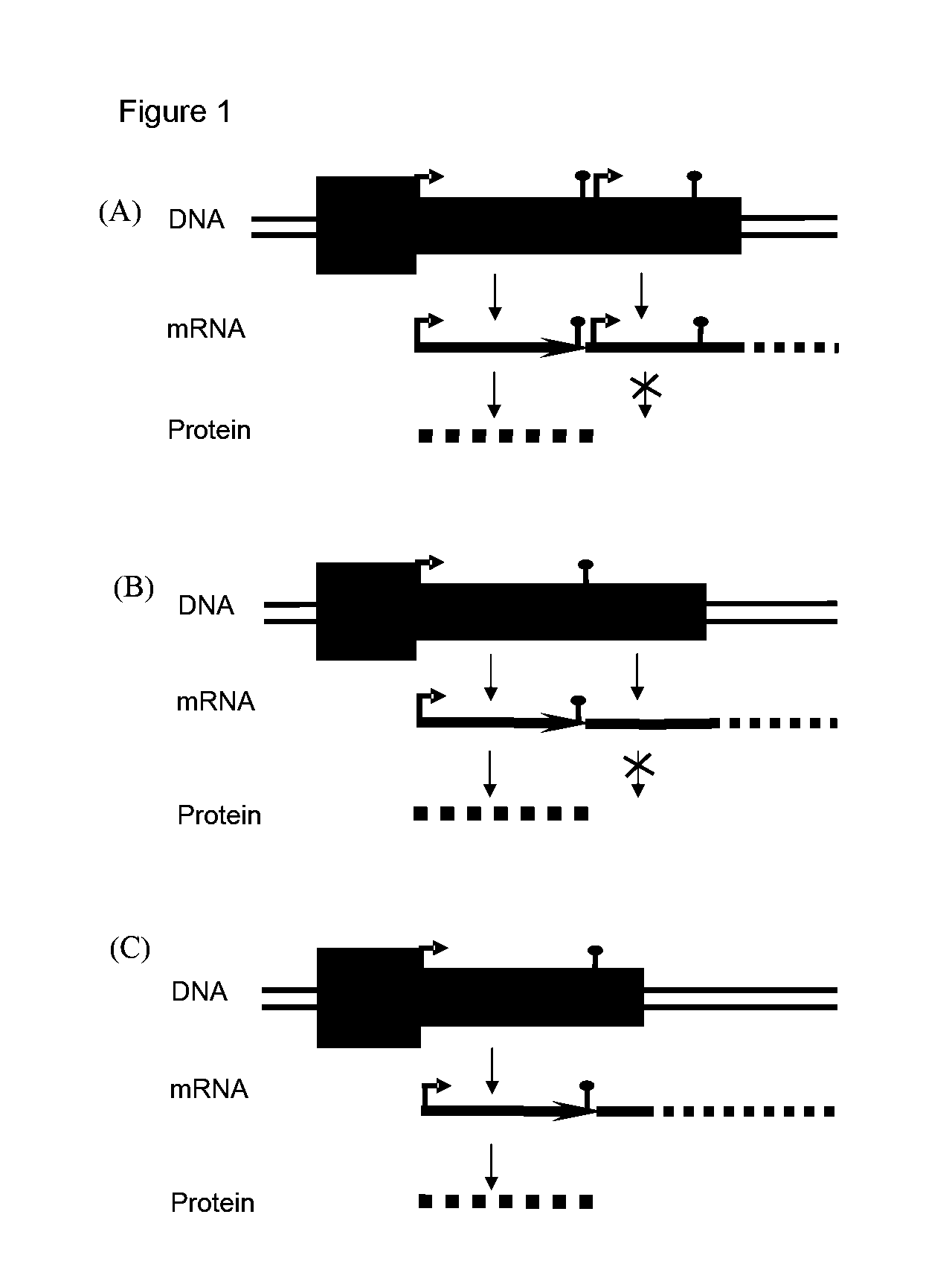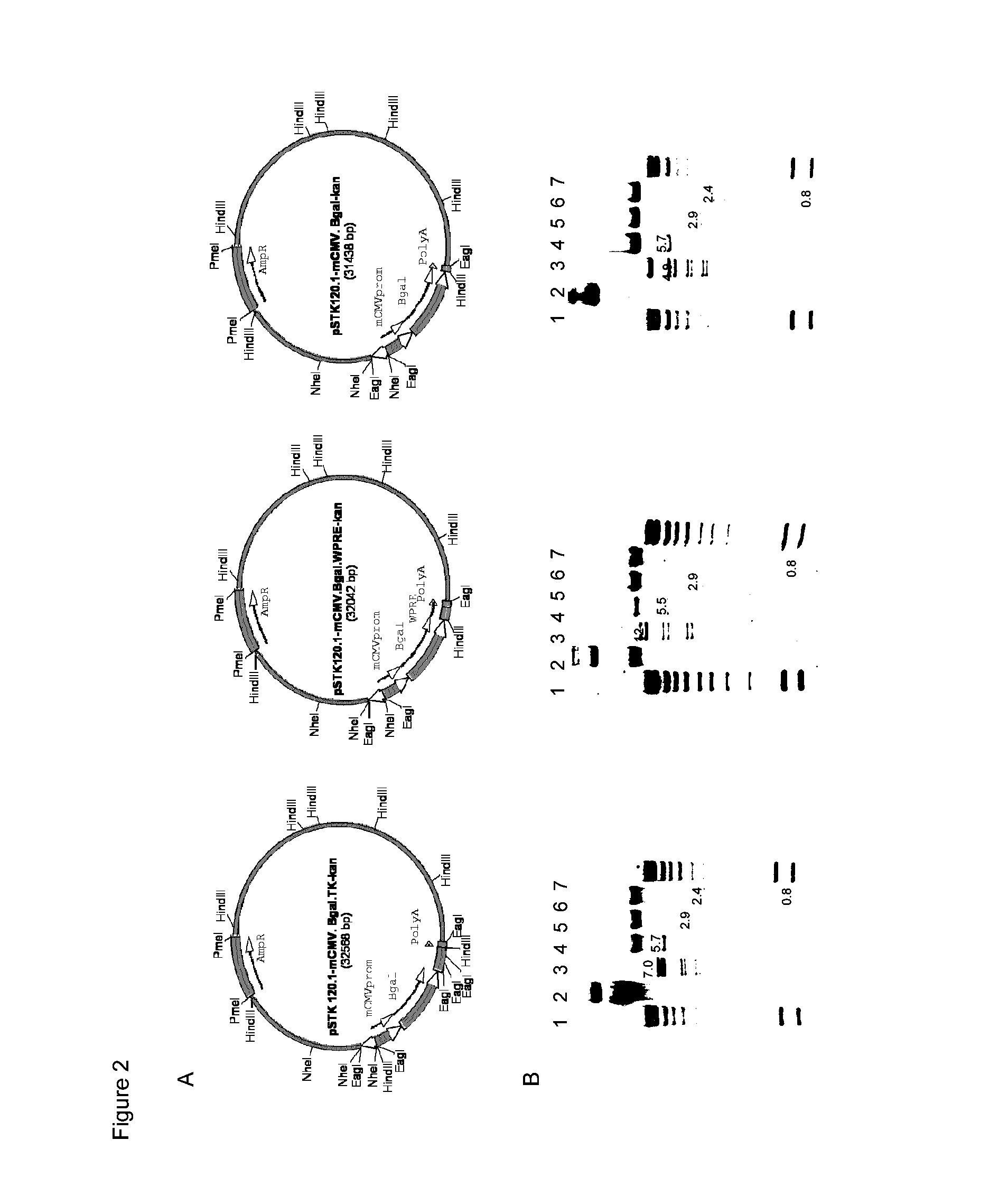Adenoviral vector comprising herpes simplex virus type 1 thymidine kinase and a transgene for increasing the expression of the transgene
a technology of adenoviral vector and adenoviral virus, which is applied in the field of transgene expression, can solve the problems of reducing the transduction efficiency in vivo, significant morbidity in transduced hosts, and less efficient packaging of the helper virus genome than the hc-ad genom
- Summary
- Abstract
- Description
- Claims
- Application Information
AI Technical Summary
Benefits of technology
Problems solved by technology
Method used
Image
Examples
example 1
Engineering of the Transgene and Postranscriptional Elements
[0068]pBluescript II SK(+) (Stratagene, La Jolla, Calif.) was modified as described previously (Candolfi, 2006) originating pBS-MCS1 with Multiple Cloning Site 1 (MCS1) containing NotI, AscI, NheI and HindIII; in order to clone the cassettes bearing HSV-1 TK generating pBS-MCS8 with a MCS containing KpnI, NotI, AvrII, HindIII, NheI, NotI, SacI. In both pBSMCS1 and pBSMCS8 vectors Kanamycin was cloned into NheI site, and a cassette containing mCMV promoter and SV40 polyA was cloned into HindIII. The cassettes containing the transgene and post-transcriptional elements were cloned into SaII site of the corresponding vector. A third modification of the pBluescript II SK(+) with a MCS6 containing SaII, BamHI, EcoRI, XbaI, PvuII, BgIIISaII, ClaI, HindIII, generated the pBSMCS6.
[0069]The βgalactosidase cassette (βgal) transgene was excised by BamHI digestion from PAL119 βgal (RAd 35), and cloned into pBSMCS6, generating pBMCS6βgal...
example 2
Engineering of HC-Ad Plasmids
[0072]The insert mCMV βgal-kan was excised with NotI cloned into the EagI pSTK120, generating pSTK120mCMV-βgal, generation of the pSTK120 hCMV-βgal vector has been described previously (Umana et al. (2001). Efficient FLPe recombinase enagles scalable production of helper-dependent adenoviral vectors with negligible helper-virus contamination. Nature Biotechnology. 19(6):582-5). The inserts mCMV-βgal-kan, mCMV-βgal-ΔTK-kan, mCMV-βgal-WPRE-kan and mCMV-βgal-IRES-TK-kan, were excised with AvrII and cloned into the compatible NheI site of pSTK120.1 previously described (Wei), generating pSTK120.1 mCMV-βgal-TK, pSTK120.1 mCMV-βgal-ΔTK, pSTK120.1 mCMV-βgal-WPRE, and pSTK120.1 mCMV-βgal-IRES-TK.
example 3
Production, Scale Up and Purification of HC-Ad Vectors
[0073]HC-Ad vectors were generated using 10 μg of HC-Ad plasmid DNA that was linearized using Pme I, heat inactivated, and transfected into 293FLPe cells using the calcium phosphate method. Transfected 293 cells were co-infected with FL helper virus (Umana et al. (2001). Efficient FLPe recombinase enagles scalable production of helper-dependent adenoviral vectors with negligible helper-virus contamination. Nature Biotechnology. 19(6):582-5) (previously generated in the inventors' laboratory) with a multiplicity of infection (M.O.I.) of 5 (passage 0). All subsequent infections in the amplification were done using an M.O.I. of 1. After full cytopathic effect (CPE) was observed for each passage, 1.5×106 of pre-seeded confluent 293FLPe cells were adsorbed for one hour with 0.5 ml of the cell lysate from the preceding passage (after three cycles of freeze / thaw for membrane lysis and viral release), followed by infection with FL helper...
PUM
| Property | Measurement | Unit |
|---|---|---|
| time | aaaaa | aaaaa |
| body weight | aaaaa | aaaaa |
| volume | aaaaa | aaaaa |
Abstract
Description
Claims
Application Information
 Login to View More
Login to View More - R&D
- Intellectual Property
- Life Sciences
- Materials
- Tech Scout
- Unparalleled Data Quality
- Higher Quality Content
- 60% Fewer Hallucinations
Browse by: Latest US Patents, China's latest patents, Technical Efficacy Thesaurus, Application Domain, Technology Topic, Popular Technical Reports.
© 2025 PatSnap. All rights reserved.Legal|Privacy policy|Modern Slavery Act Transparency Statement|Sitemap|About US| Contact US: help@patsnap.com



